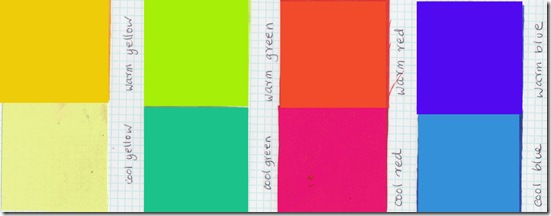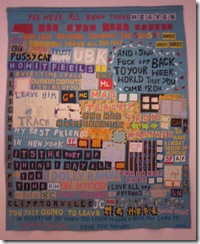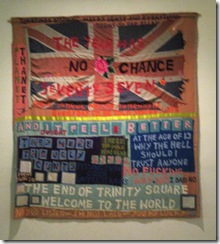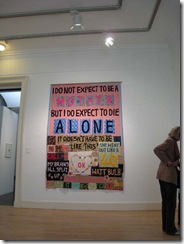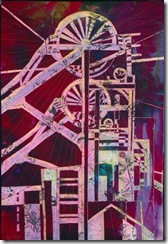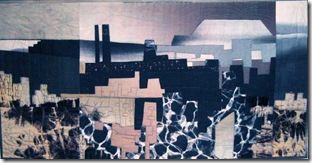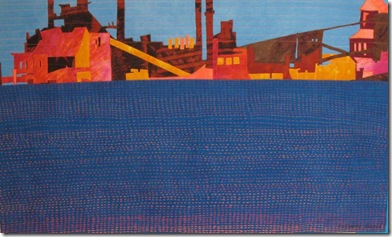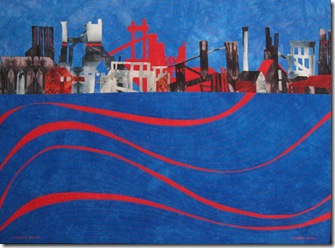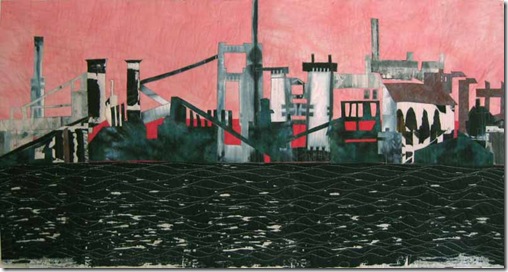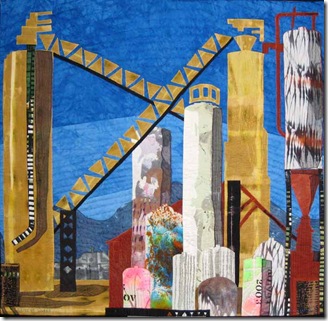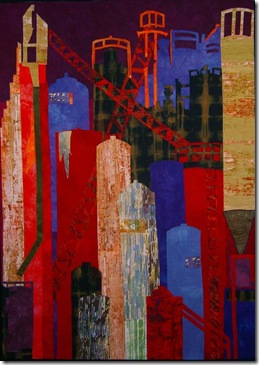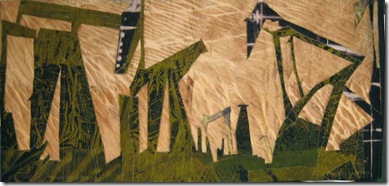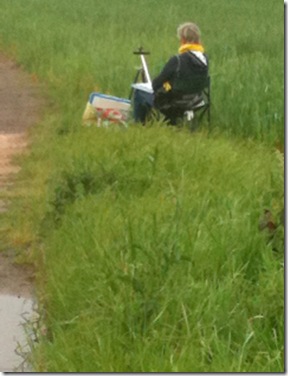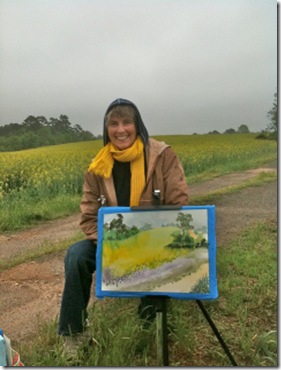Of all the ways of using color contrast in quilts (and other mediums), the one that seems to confuse people the most is that of temperature. Color varies in a number of different ways: hue, value, intensity and temperature. Some would argue that temperature isn’t a true variable since a color’s temperature is always relevant to another color rather than being purely warm or cool on its own. However, in quilt making we are working with lots of colors, so strict theoretical categorization is not an issue – and, furthermore, it’s not on the test!!
Hue, of course, is straightforward: red, yellow, blue etc whether you like the traditional 12 step color wheel or the Munsell 10 step one.
Value is how light or dark a color is: pale blue versus dark blue, etc.
Intensity is how saturated a color is: the richest colors are the most saturated, the most intense. These are nearly always of medium value. Which makes sense when you think about it…in order to make a color paler, you use less dye and so it is less saturated. In order to make a color darker you either add black, or a darker similarly hued color, or a little bit of a complementary – any of these will make the color darker, but they are also reducing the purity of the color.
And temperature?
Overall we consider yellow, orange and red to be warm. Blue and green to be cool.
Everyone understands that…but what about within a color? There are warm blues and cool ones, warm yellows and cool ones, warm reds and cool, and also warm and cool greens. What makes the difference is the little bit of color that is added to the pure hue to make it warmer or cooler.
Think of cobalt blue: it’s generally considered to be a fairly neutral blue. Add a tiny touch of green (a cool color) and you get turquoise or Prussian blue, these would be considered cool blues. Add a tiny touch of red (a warm color) to a neutral blue and you get a warm blue that approaches purple (like ultramarine or royal blue).
Here are some examples I just whipped up on Photoshop:
There’s another way of thinking about it that might help too. Think about a color wheel that has infinite subtle gradations between the colors…think about the blue gently shifting into green…and compare that shade of blue to the blue that is right in the middle of the blue range. The other end of the blue range is softly changing into violet. Compare the violet blue (with its little hint of red) with the neutral blue.
So we can look at color temperature in a non relative way i.e. red yellow and orange are warm, blue and green are cool. But we can also look at a specific example of a color and see that it can range from warm to cool within itself.
Okay! I hope you’ve got it now! And you’re probably thinking, well ,why do I need to have it in the first place?? Right?
Well….that’s because of the great value of using color contrast to make your art work stronger and more expressive. The impressionists were masters of color – principally because of their use of contrast. They contrasted hue, value, intensity and temperature. If you come into a lovely warm house on a freezing day it seems much cozier than if you come into that same warm house on a mild day. So you can make the warmth seem even better by the contrast. And of course in the currently overheated south east the same would hold true of air conditioning!
Furthermore, colors of different temperatures used together in a piece can create a sense of movement. Warm colors tend to advance towards the viewer, cool ones recede.
Cezanne was the impressionist painter who really used temperature contrast to manipulate form, space and light. He felt that if he placed dabs of warm and cool colors against each other they would indicate the light much more strongly that using the value contrast that had been so popular up until that time. Instead of using a darker color for something that was “further back” and a lighter color for something advancing, he used cool tones to make things recede, and warm ones to make them advance. Take a look!!
So much to learn and so little time…so if you have been, thanks for taking the time out to read this! And do please, make a comment!! Thank you, Elizabeth
